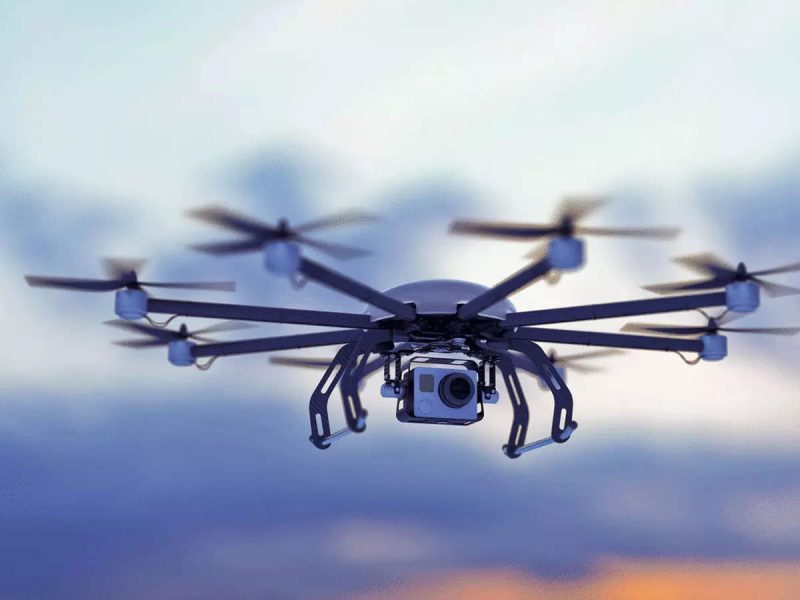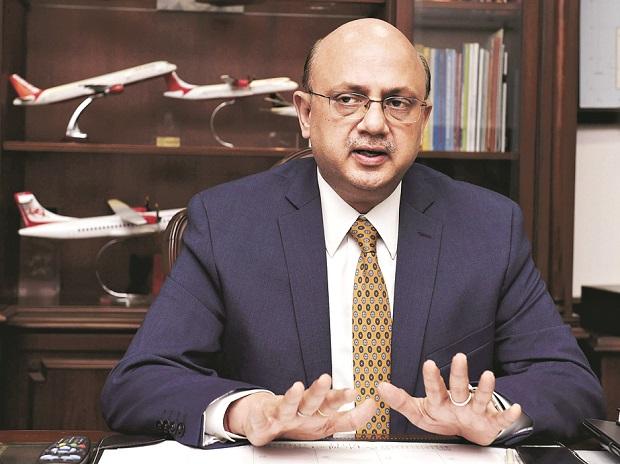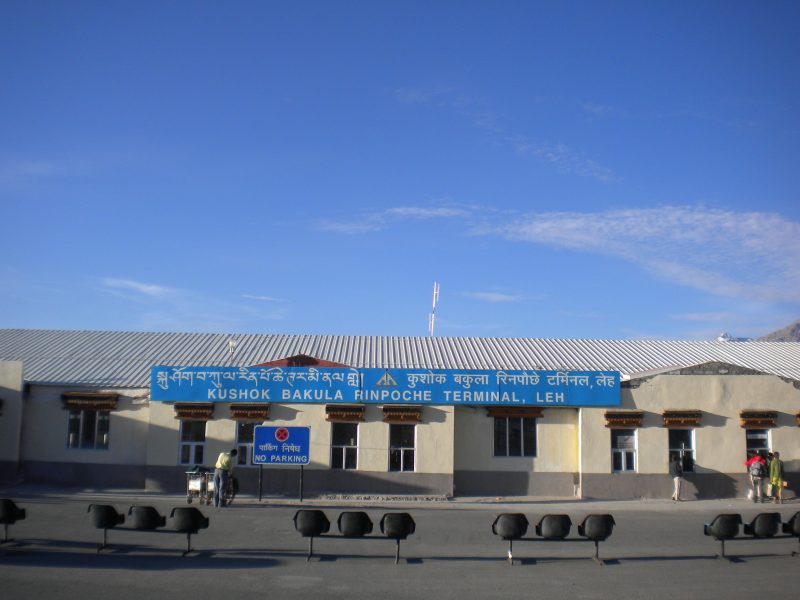India's airspace map for drone operations released by the aviation ministry
Radhika Bansal
25 Sep 2021

The central government on Friday, September 24 released India's airspace map for drone operations under the collective vision of an 'Aatmanirbhar Bharat'. "The drone airspace map comes as a follow-through of the liberalized Drone Rules, 2021 released by the government on August 25, the PLI (Production Linked Incentive) scheme for drones released on September 15 and the Geospatial Data Guidelines issued on February 15," the Ministry of Civil Aviation stated in a release.
https://twitter.com/JM_Scindia/status/1441425828567392270
All these policy reforms will catalyze super-normal growth in the upcoming drone sector, it added.
The Ministry also said, "Given its traditional strengths in innovation, information technology, frugal engineering and its huge domestic demand, India has the potential of becoming a global drone hub by 2030."
Features of drone airspace maps and different zones explained by Aviation Ministry:
Green Zone
Its zone is the airspace up to 400 feet that have not been designated as a red or yellow zone and up to 200 feet above the area located between 8-12 km from the perimeter of an operational airport. In green zones, no permission whatsoever is required for operating drones with an all-up weight up to 500 kg.
Yellow zone
It is the airspace above 400 feet in a designated green zone; above 200 feet in the area located between 8-12 km from the perimeter of an operational airport and above ground in the area located between 5-8 km from the perimeter of an operational airport.
Drone operations in the yellow zone require permission from the concerned air traffic control authority – AAI, IAF, Navy, HAL etc. The yellow zone has been reduced from 45 km earlier to 12 km from the airport perimeter.
This is the snippet of the drone airspace map. We can clearly see Red and Yellow zones here.
Red zone
The red zone is the ‘no-drone zone' within which drones can be operated only after permission from the Centre.
The Ministry further mentioned that the airspace map may be modified by authorized entities from time to time.
"Anyone planning to operate a drone should mandatorily check the latest airspace map for any changes in zone boundaries," it added.
The map can be viewed on aviation regulator DGCA's digital sky platform.
The New Drone Rules
The New Drone Rules or the liberalised Drone Rules 2021 were released by the Central Government on August 25 followed by the Production Linked Incentive (PLI) scheme for drones on September 15 and the Geospatial Data Guidelines on February 15. These policy reforms are expected to further catalyse super-normal growth in the upcoming drone sector.
Adding to it, the drones will provide numerous benefits to the economy as they will be utilised for agricultural, mining, infrastructure, emergency purposes, transportation, defence, law enforcement, and many more. One of the major highlights of its inclusion will be its reach to even the most remote and inaccessible areas.
Talking about its investment, the drone industry may witness an investment of more than INR 5,000 crore over the upcoming three years. Also, the annual sales turnover will grow in the current fiscal year and is estimated to cross more than INR 900 crore in the next financial year. Furthermore, it will also provide over 10,000 employment opportunities for people in the industry.
Read next
With festivities around the corner, people are now turning to charter flights to fly
Prashant-prabhakar
27 Sep 2021
Robb Report
Various countries are gradually opening up their borders to visitors, and families and travel bugs have started packing their bags and catching up on holiday-ing and backpacking to various destinations across the globe.With Diwali round the corner, travellers are leaving no stone unturned to make sure they spend the festive season with a bang this time around.If reports are to be believed, there's been an unprecedented surge in private charter bookings with the bulk of bookings made for the month of October and November, at a time when Durga Puja and Diwali is celebrated.
There is a spurt seen in the charter segment for leisure or festive season charter travellers this year as more domestic and international travel destinations have opened for Indian citizensShanil Desai, director of Jetfleet Aviation
According to him, there's been a increase of 24% in passenger demands this year as opposed to last year during the festive season.Additionally, he added that they are further expecting a higher demand come winter for leisure/charter operations.
A majority of these domestic bookings are for Diwali and Durga Puja holidays. The preferred flight is a single charter flight with six to eight passengers along with their petsSimi Kuriakose, emergency mission controller - Asia-Pacific of Airborne Private Jet
Furthermore, she said customers now have international destinations in mind with Moscow, Maldives, Dubai, Thailand and Bali being the top picks. Statistics show a 60% opting for overseas travel while the rest want to head back home within the country for the festivities.
With the upcoming festive season and the government lifting the travel restrictions for both domestic and international destinations gradually, we are witnessing a drastic surge in charter booking requestsKanika Tekriwal, CEO and founder, JetSetGo Aviation
Kanika Tekriwal / Outlook Business WoW
Why are people switching to private charter flights now?
Although commercial flight operations have been allowed to operate at 85% capacity, people still prefer flying private majorly because of the high level of safety it offers.
This is where a private jet comes in with a completely different working process from booking to landing at your destinationNisha Sharma, MD, Aloft Aviation
As mentioned earlier, travellers are now looking at more off-beat, destination hotspots to bring in the festive cheer with family.
Usually, popular sectors for travelling amidst festivities are Goa, Jaipur, Kolkata, Udaipur, Jodhpur, Jaisalmer, Maldives, Dubai, Kathmandu, Koh Samui, Phuket, Singapore, Bangkok and Mauritius. However, due to uncertainties linked to international travel, we are currently witnessing travel booking requests for selected countries like Maldives, Dubai, Sri Lanka, Ukraine, Russia and some of the European countriessays Tekriwal.
Maldives continues to retain the spot as a travellers' paradise. Current trends show a single family hiring a 6-8 medium size jet while bigger families tend to opt for the more spacious 10-13 seater jets.Bookings are made 30-45 days prior to the date of travelling and travel gurus predict the trend to continue for as long as the year ends.
COVER: Trac.in
Read next
Boeing F-15EX Fighter Jets to have indigenously manufactured aerostructures?
Prashant-prabhakar
26 Sep 2021
If reports are to be believed, a contract has been awarded by the US aerospace giant Boeing, to an Indian company for the manufacture of aerostructures of its newest tactical fighter F-15EX ‘Eagle II.
nationalinterest,org
The contract between Bengaluru-headquartered Dynamatic Technologies and Boeing would further boost the "Make in India" campaign, which has already been witnessing a surge in its activities with contracts from foreign entities.Interestingly, Boeing is also pitching the F-15EX to the Indian Air Force (IAF), suggesting the aerospace conglomerate's deep interest in Indian market. The contract proves the mettle of Indian Manufacturing Quality in the global world.Since April 2018, IAF has floated a tender for the procurement of 114 additional fighter jets for its air fleet.Apparently, Boeing’s Eagle II is competing for the tender alongside seven other aircraft including Swedish Saab’s Gripen, the Russian MiG-35 and Su-35, French Dassault Rafale, Eurofighter Typhoon, the US’ Lockheed Martin’s F-21, and Boeing’s Super Hornet.
Dynamatic Technologies CEO Udayant Malhoutra / Economic times
Tech and specifications
Capable of launching hypersonic munitions that are up to 6.7 meters long and weighing up to 3,175 kg, this bird can carry more weapons of any fighter jet of its class. It boasts of a digital airframe with advanced rapid technology insertion. With open mission systems architecture ,Although the F-15EX costs $87.7 million a piece, it offsets the high price through a relatively low operating price, $27,000.The firm, Dynamatic Technologies, has been closely associated with Boeing as a strategic tier-1 supply partner for more than a decade. The company provides aerostructures for several platforms, including the ailerons and wing flaps for the Hindustan Aeronautics Limited (HAL) HJT-36 intermediate jet trainer and the forward fuselage of the LCA Tejas fighter.
There is tremendous potential for India to contribute industrially and technologically to the global aerospace industryBoeing
Also, the Indian Navy is also trying to acquire P-8I long range maritime patrol aircraft from Boeing. Apparently, the Navy is exploiting the P-8Is at a higher rate than the U.S. Navy-according to Surendra Ahuja, Managing Director, Boeing Defence India.
Naval News
It is also said that Boeing is in the process of setting up a 60,000-sq. ft. training support and data handling centre at INS Rajali, Arakkonam, with a secondary centre at the Naval Institute of Aeronautical Technology (NIAT), Kochi. Exciting times for Indian aviation ahead indeed.
COVER: The Financial Express
Read next
An interactive airspace map will be uploaded on a digital platform in the next two days with red, yellow and green zones earmarked on it, indicating go and no-go areas for operating drones, Union Minister for Civil Aviation Jyotiraditya Scindia said on Thursday, September 23 a month after the Centre unveiled a new policy for unmanned aerial vehicles. The airspace map has been prepared after consultation with state governments, he said.
In the coming two days, an interactive airspace map for the entire country will be uploaded having red, yellow and green areas for flying drones. In the red space, no drones will be allowed to fly, while in the yellow one, they will fly with permission (from authorities). In the green space, no permission will be required at all for flying drones, Scindia told reporters here.
"We have prepared this airspace map in consultation with all state governments. There will be a Digital Sky Platform on it, which means there will be no (role of) the Directorate General of Civil Aviation (DGCA). Permission (for operating drones) will be granted by the Digital Sky Platform. Those seeking it will have to enter the entire flight path. Within five seconds, permission or lack of it will be known."Jyotiraditya Scindia, Union Minister for Civil Aviation
Soon after getting permission, people can fly their drones, he said. Citing an example from Telangana, Scindia said two days back coronavirus vaccines were transported by a drone to a remote area where nurses, doctors and beneficiaries were already present for inoculation.
The moment it landed at the designated place, nurses recorded the number of vaccines received in the inventory and soon after jabs were administered to people, he said. The new drone policy will give a fresh impetus to India's economy and generate employment opportunities for people, especially youths, the minister said.
He said a 10th class student can become a drone pilot by getting training in 15 days to two months and can easily earn a salary of INR 30,000 per month."This is the strength of the new drone policy," Scindia said.
In a notification dated August 25, the Ministry of Civil Aviation eased the rules regarding drone operations in the country by reducing the number of forms that need to be filled to operate them from 25 to 5 and decreasing the types of fees charged from the operator from 72 to 4.
The fee, according to the new rules, has been reduced to nominal levels and de-linked from the size of the drone. The rules have also abolished the requirement of various approvals, including certificate of conformance, certificate of maintenance, import clearance, acceptance of existing drones, operator permits, authorisation of R&D organisation and student remote pilot licence.
Other approvals such as unique authorisation number, unique prototype identification number and certificate of manufacturing and airworthiness have also been abolished, according to Drone Rules, 2021.
Read next
The new airport terminal in Leh is likely to become operational by December next year, Civil Aviation Minister Jyotiraditya Scindia said on Tuesday, September 21.
This was conveyed by Scindia to Ladakh Lieutenant Governor R K Mathur during a virtual meeting with him to discuss the progress of ongoing and new civil aviation projects for better air connectivity in the region.
"The new airport terminal at Leh may become operational by December 2022, the aviation minister said.
He also agreed to the construction of a civil enclosure at Thoise airport, considered the air lifeline to the world's highest and coldest battlefield, by the Airports Authority of India (AAI) once the land is made available.
Thoise Airport
Scindia noted that a team will shortly visit Ladakh to technically evaluate locations for additional airstrips in Leh. He agreed to look at the possibility of operationalising commercial flights with smaller jet planes to Kargil as an interim solution.
The minister requested the Lieutenant Governor to consider lowering VAT on Aviation Turbine Fuel (ATF) to encourage more flights to operate to Ladakh, stressing that it will become a booster for Ladakh's tourism.
The L-G requested the minister for intervention in regulating winter airfares, support in the operationalisation of air ambulances and exploring the possibility of night flights to Leh.
Read next
Rajiv Bansal, CMD of Air India, appointed as the Civil Aviation Secretary
Radhika Bansal
24 Sep 2021

The government on Wednesday, September 22 appointed Indian Administrative Service (IAS) officer Rajiv Bansal as the Secretary to the Union Ministry of Civil Aviation.
Mr Bansal, at present, is serving as the Chairman and Managing Director of the national passenger carrier Air India. Previously, he has also served as Financial Advisor to the Petroleum and Natural Gas Ministry.
He will succeed Pradeep Singh Kharola, who is due to retire by end of the month.
Mr Bansal is a 1988 batch IAS officer from the Nagaland cadre. He has earlier had a stint with the Ministry of Civil Aviation (MoCA) between 2006 and 2008.
A civil engineer from IIT Delhi, Rajiv Bansal was appointed AI chairman last February. He had earlier been on the board of National Aviation Company of India Ltd — the short-lived name of Air India and Indian Airlines after the two were merged in 2007 — and Alliance Air, among other organisations.
Directorate General of Civil Aviation (DGCA) chief Arun Kumar
Directorate General of Civil Aviation (DGCA) chief Arun Kumar has also been given the rank and pay of secretary to the government of India by the appointments committee of the Cabinet (ACC) in an in-situ upgradation. The Federal Aviation Administration and International Civil Aviation Organisation are soon going to start an audit of DGCA. Kumar is a 1989 batch IAS officer of the Haryana cadre.
Arun Kumar was given additional charge as DGCA in May 2019, while he was additional secretary and financial advisor in the Union aviation ministry. Kumar is an experienced aviation hand who has spent several years overseeing the sector. The government clearly wanted audits by international agencies of DGCA to take place under his command.



Comment